- Continue Shopping
- Your Cart is Empty
Mead: Time Sweetened Honey

What You'll Need
Equipment
- 2 one gallon jugs
- 1 musting cap for 1 gallon jug
- airlock
- Auto-siphon and/or racking cane, plus a length of clear plastic tubing, for starting the siphon
- Stock pot or brew pot
- Bottling tip
- Bottle brush for cleaning bottles
- Hydrometer jar and Hydrometer All of these items including the yeast and sanitizer come in our 1 Gallon DIY Hard Cider Kit
Ingredients:
- 1 quart honey
- 3 quarts un-chlorinated water
- 1 teaspoon champagne or mead yeast
- brewing Sanitizer such as Iodophor or Star-San
Mead is one of the oldest fermented beverages, perhaps even the oldest; after all, at its most basic, it requires only honey and water to make. A recipe from Pliny the Elder, (who was by no means the first to make this sweet fermented beverage) is the oldest written account of the recipe. This is what he had to say, in A.D. 77, according to a favorite source of brewing inspiration, Sacred and Herbal Healing Beers, by Stephen Buhner. Pliny lists the ingredients as “3 parts rainwater, 1 part honey,” and goes on:
“A wine is … made of only water and honey. For this it is recommended that rain water should be stored for 5 years. Some who are more expert use rainwater as soon as it has fallen, boiling it down to a third of the quantity and adding one part of old honey to three parts of water, and then keeping the mixture in the sun for 40 days after the rising of the Dog-star. Others pour it off after 9 days and then cork it up. This beverage in Greece is called “water -honey”; with age it attains the flavour of wine.”
Follow the trail even further back in time, and we can see cave paintings from the stone age, which depict the collection of honey from wild bees; it’s not too far a stretch to imagine that those long-ago ancestors would have mixed water with the honey, and allowed the invisible wild yeasts to ferment it into mead. Mead may predate the wheel!
There’s something mystical about mead, even if one does not use rainwater which has been aged for 5 years, or ferment it at the rising of the Dog-star. It’s been used ritualistically in all cultures which developed it, through the sacred rite of intoxication itself, and at other times, in conjunction with medicinal herbs. The term honey-moon derives from the Norse tradition of bestowing a newly wed couple with enough mead to last a month, a moon; this was believed to increase the likelihood of male offspring, and indeed may have had some physical effects that contributed to this effect.
Although mead can be flavored in a thousand different ways, with additions of flowers, herbs, fruits, and juices, the flavor of honey sings most sweetly when the recipe is reduced to something that closely resembles Plinys’ simple concoction. Generally speaking, lighter, mellower honeys are used for meadmaking; clover, sage, and wildflower honeys are common, but even the darker honeys can be used to good effect. The darker the color, the stronger the taste seems to be; sometimes the dark, late-season honeys can have a bitter flavor. Start with this simple recipe, and feel free to branch out from here. Although wild yeasts and unsterile conditions can and have been the norm when fermenting mead, we recommend the use of commercial yeasts and airlocks for more consistent results.
The longer mead ages, the more complex and interesting it gets…but we’ve rarely managed to age it for more than a year, ourselves. Mysterious, indeed.
This recipe makes 1 gallon of mead.
Directions
1) Sanitize your equipment
Sanitize all the equipment that will touch the mead. For more information about sanitation, see our article How Does Sanitation Work?.
2) Heat your honey and water
Pour the water into a stock pot and bring it to a boil to remove chlorine and sterilize the water.Allow the water to come to 160°F. Add the honey and stir until dissolved. (Some recipes call for boiling the honey, which makes for a cleaner, quicker ferment. However, many of the aromatic oils that are characteristic of the different flower honeys are boiled off as well in this process. Either method will make you mead.)

3) Cool mixture and fill fermenter
Allow the water and honey mixture to cool to 70°F.Using a funnel, pour the cooled honey-water into the fermentation vessel.
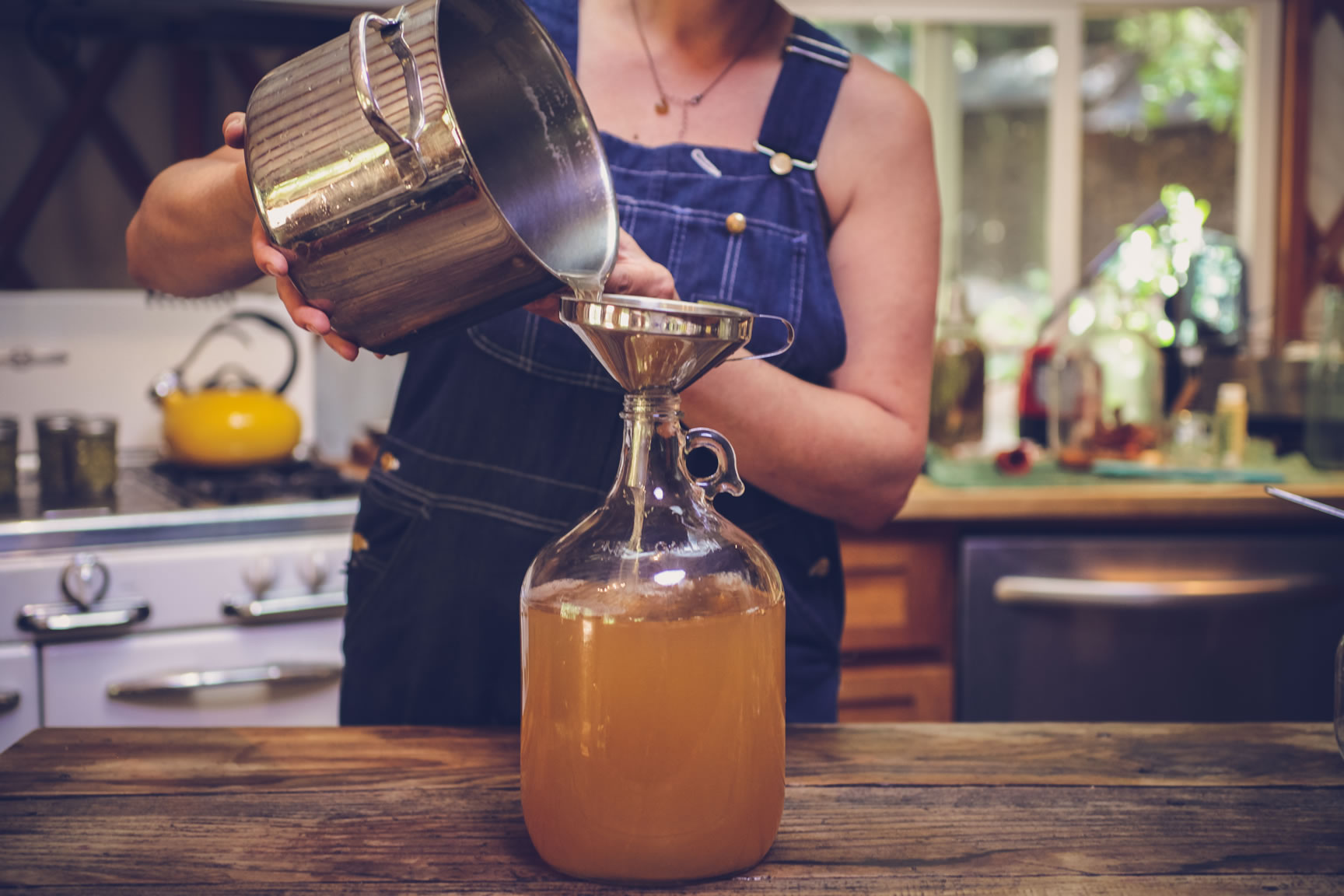
If you want to be sure of the final alcohol content of your mead, it is necessary to take a specific gravity reading at this time. Fill a sampling tube with the mead, and float the hydrometer in it. Most meads will have a reading of 1.060 - 1.120 at this time.
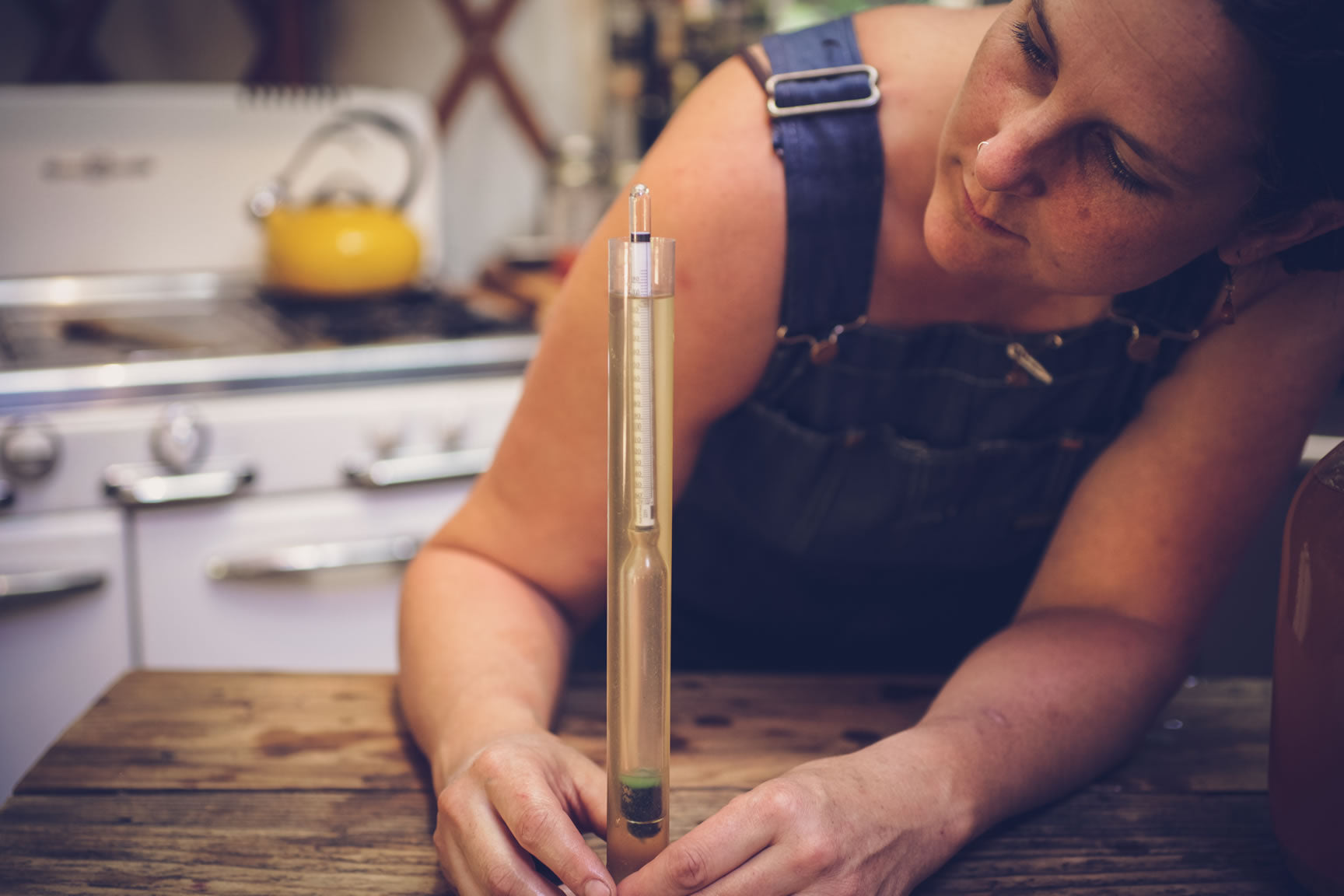
4) Add the yeast
Sprinkle the yeast on the top of the liquid, and allow it to float there, undisturbed, for several minutes.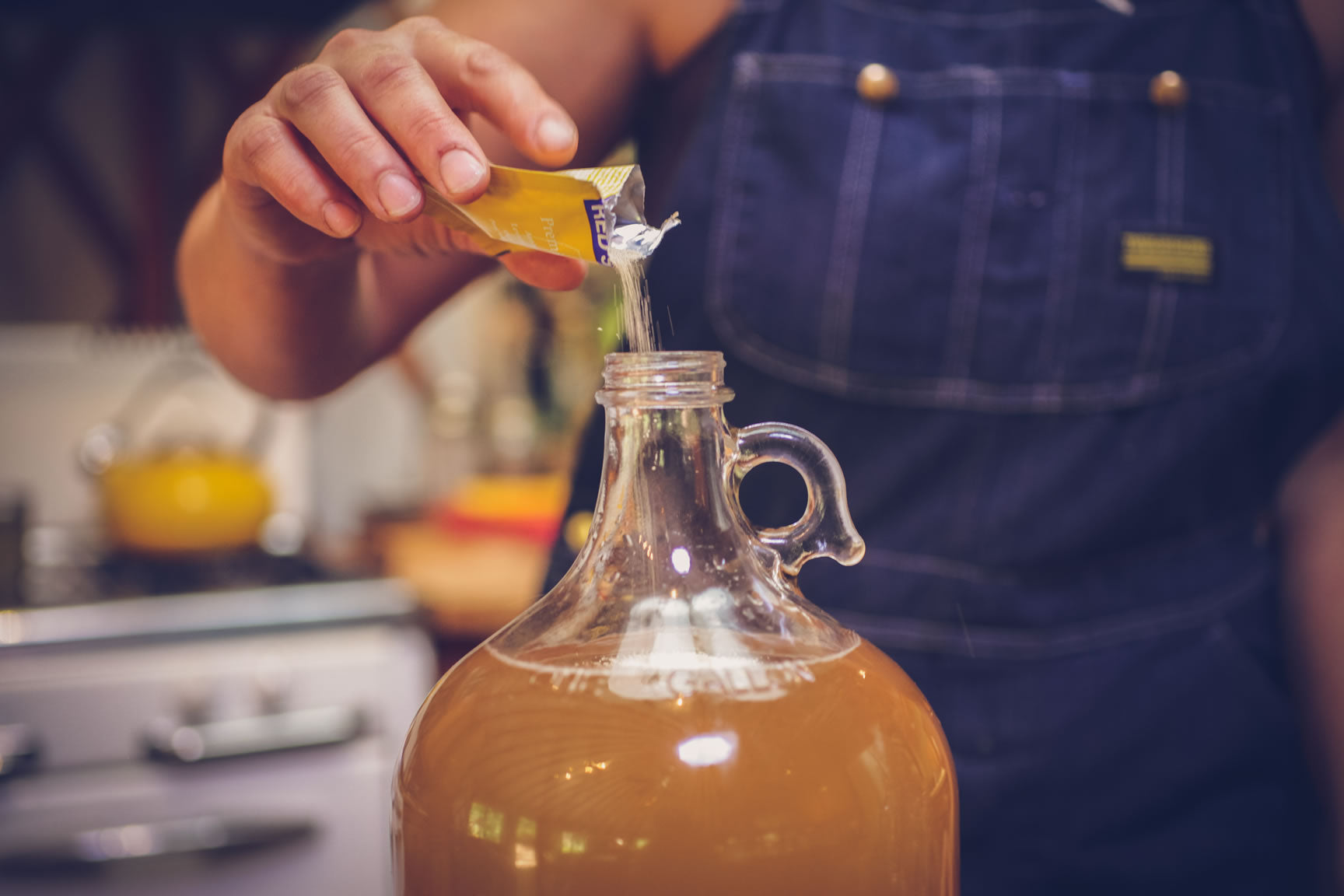
Swirl the yeast into the carboy, shaking it to distribute the yeast and provide aeration for the yeast. Make sure to seal the top of the jar with a cap or your fingers so you don't lose any of that golden goodness.
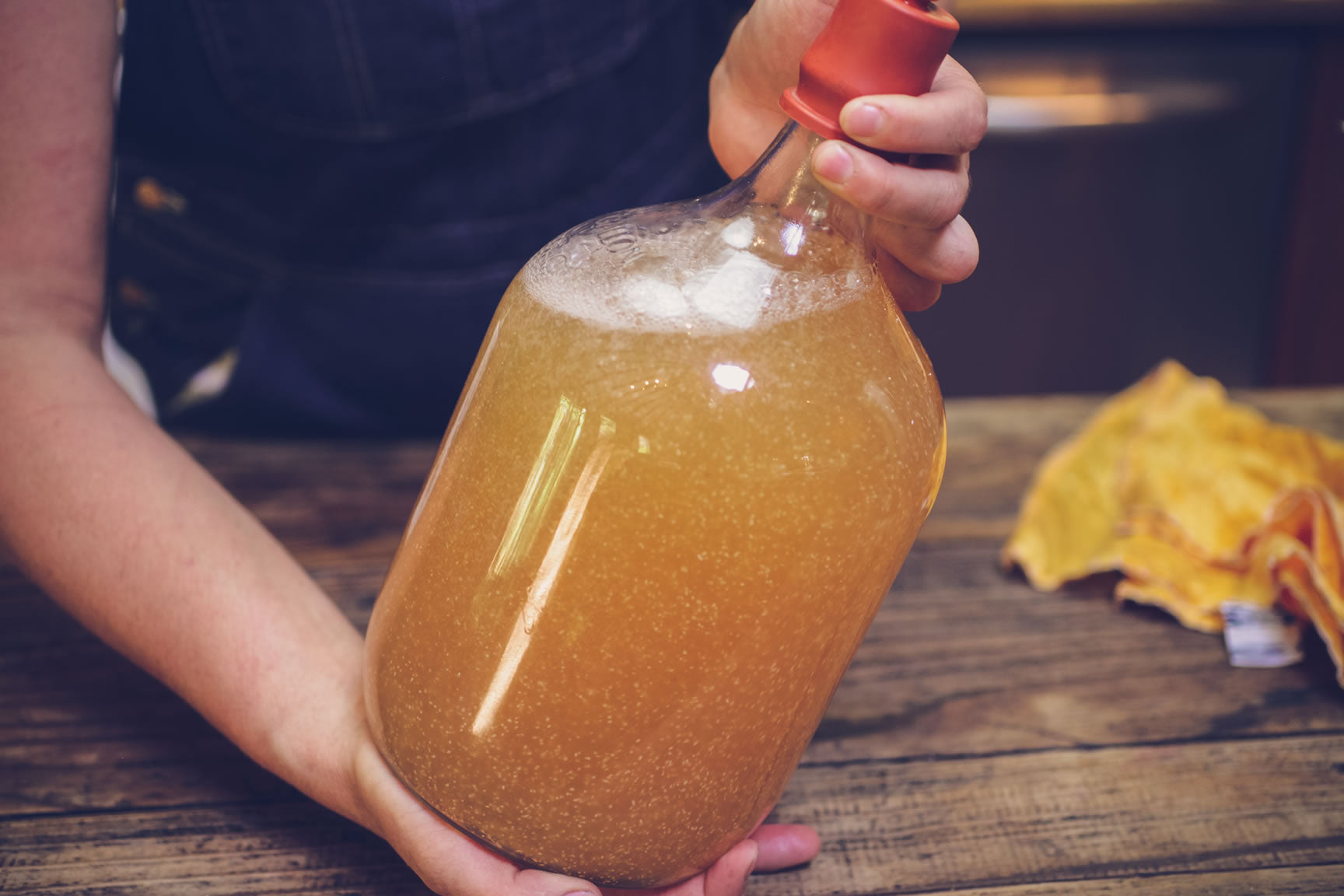
5) Seal and ferment
Affix a musting cap and airlock to the fermenting vessel.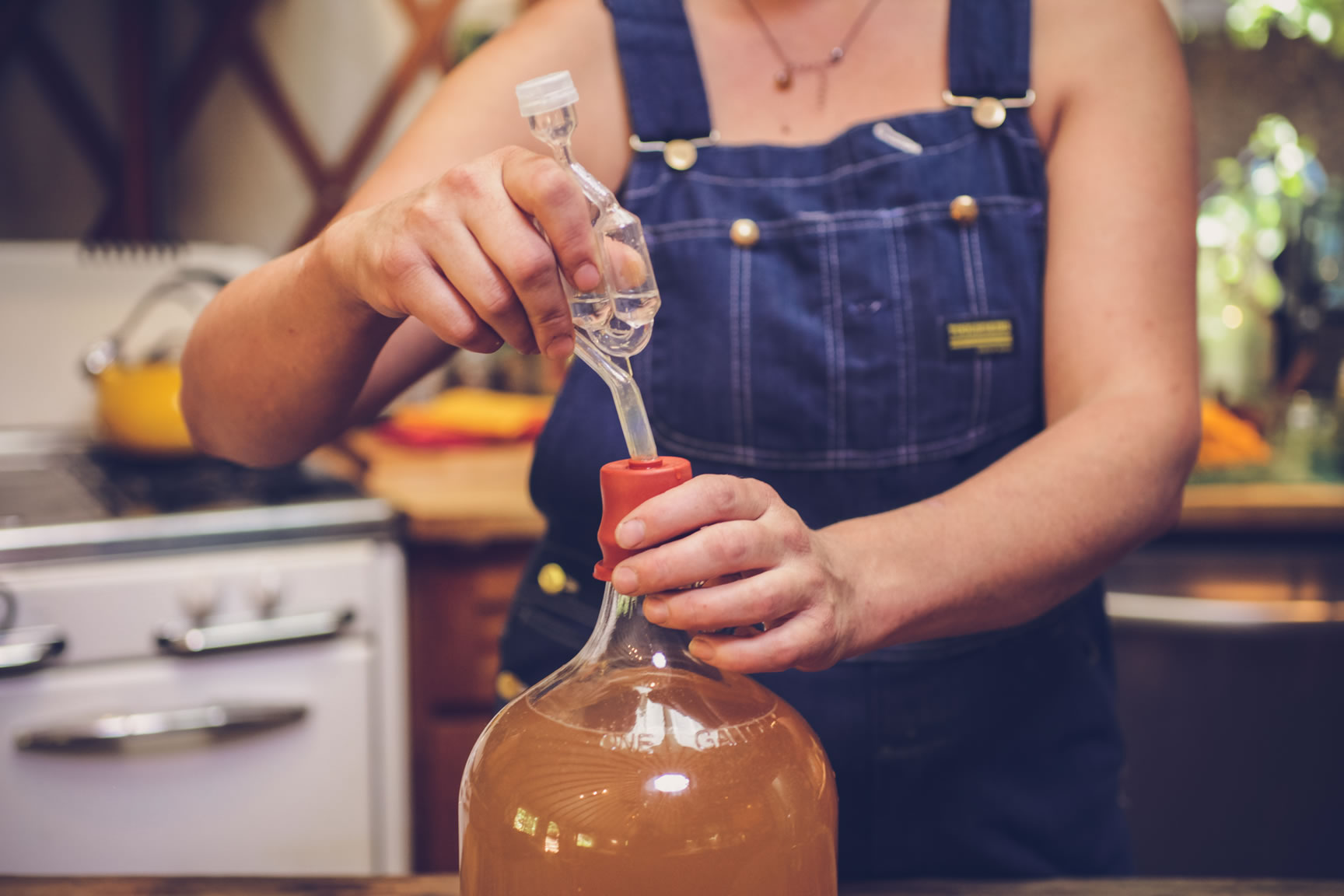
Ferment in a cool dark place at room temperature, until air bubbles stop coming out the top of the airlock, usually about 16 - 30 days.
6) Take a Specific Gravity reading and Rack
When fermentation is complete, sanitize all necessary equipment again.
Siphon the mead into another sanitized carboy, leaving behind the spent yeast solids, or lees. This step is called racking. 
To calculate alcohol by volume, take a specific gravity reading at this time, and perform the necessary calculations. The lower the reading, the drier the mead. To get the final strength of your mead, subtract the final SG reading from the original SG reading. Divide the result by 0.00736 to get the percentage of alcohol by volume (ABV).
7) Bottle
From the second, now-full carboy, siphon the mead into sanitized bottles. This step is useful to make the bottling easier; the solids on the bottom of the first carboy, while not harmful to the flavor of the mead, detract from the clear appearance of the mead. Racking the mead off the lees makes for a cleaner, clearer, more impressive finished mead.
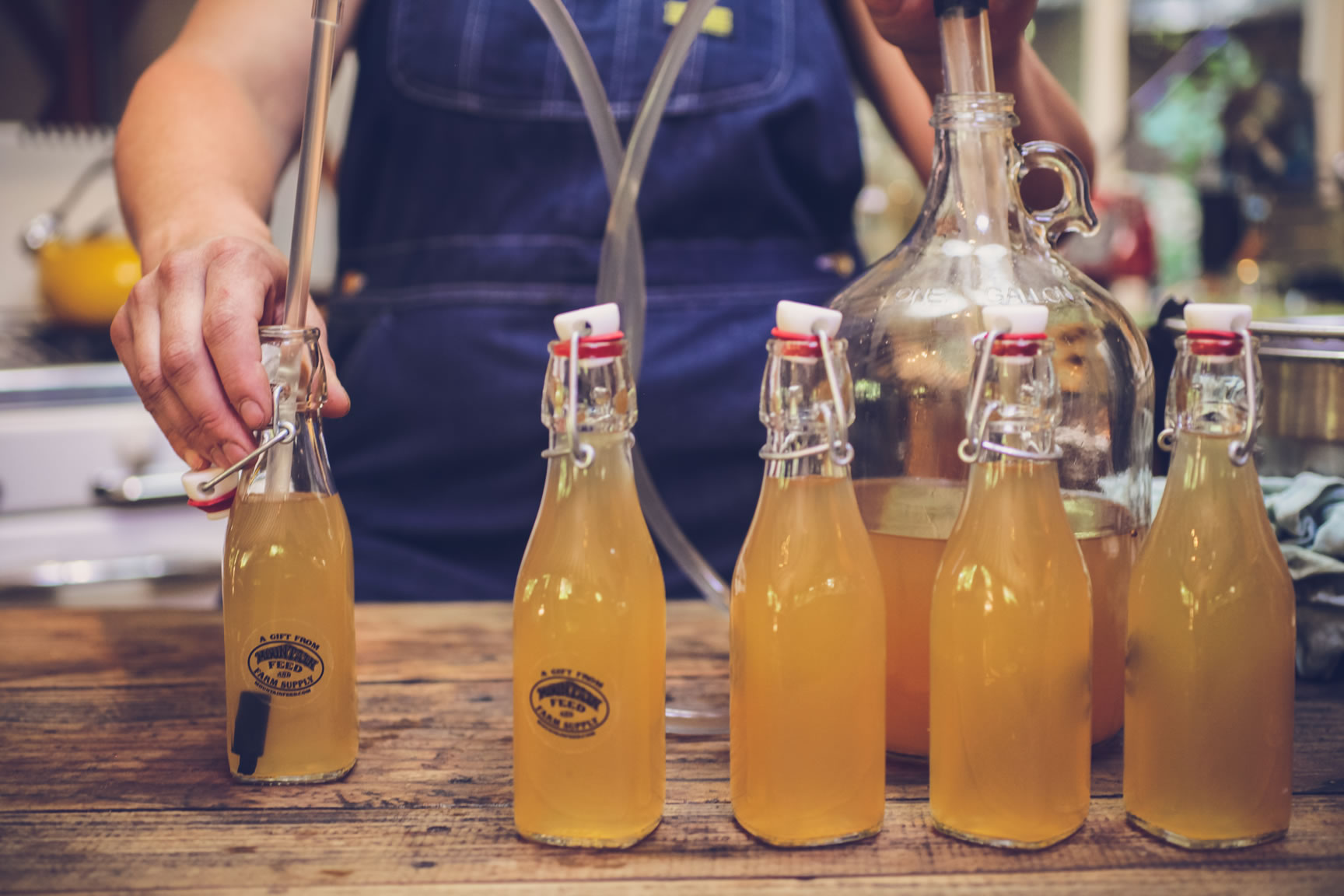
8) Seal and store to age
Secure the lids on the filled bottles of mead, and store them in a cool, dark place. The mead is ready to drink in two weeks, but the longer it ages, the better it gets! Try to hide a bottle from yourself, if you can, to open one night beneath the Dog Star, Sirius, the brightest star in the sky.
Over to You...
It’s part of our mission here at Mountain Feed to help you make delicious, sustainable, homemade food, more often. Stop by and say hello on Facebook, Twitter, Instagram or Pinterest. Or, as always, you can do it the old fashioned way and come by the store to speak with one of our in-house experts.
